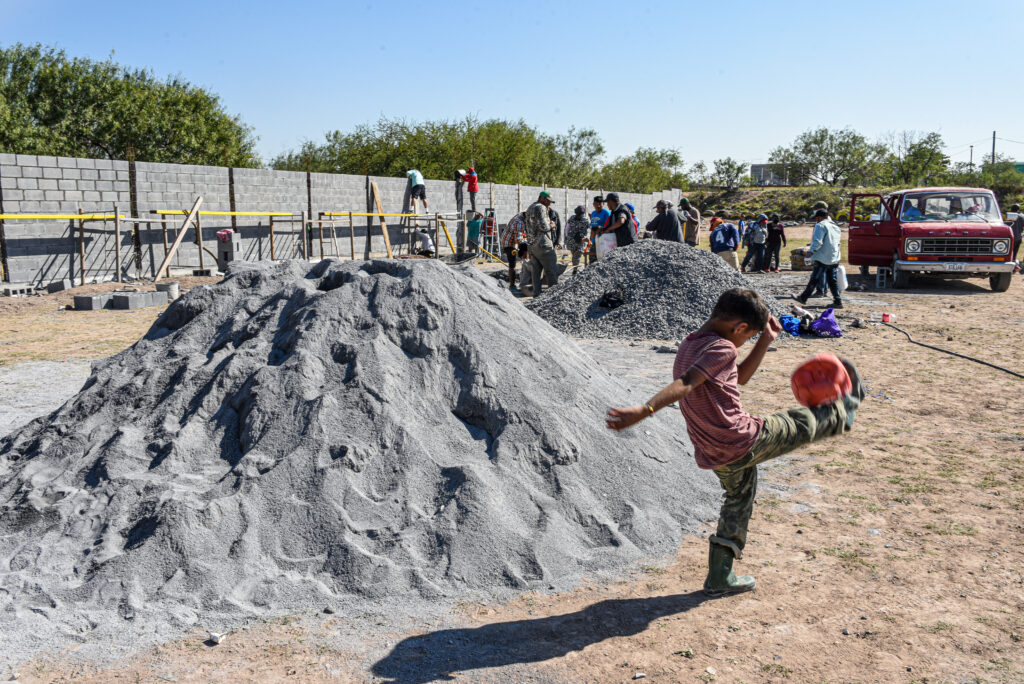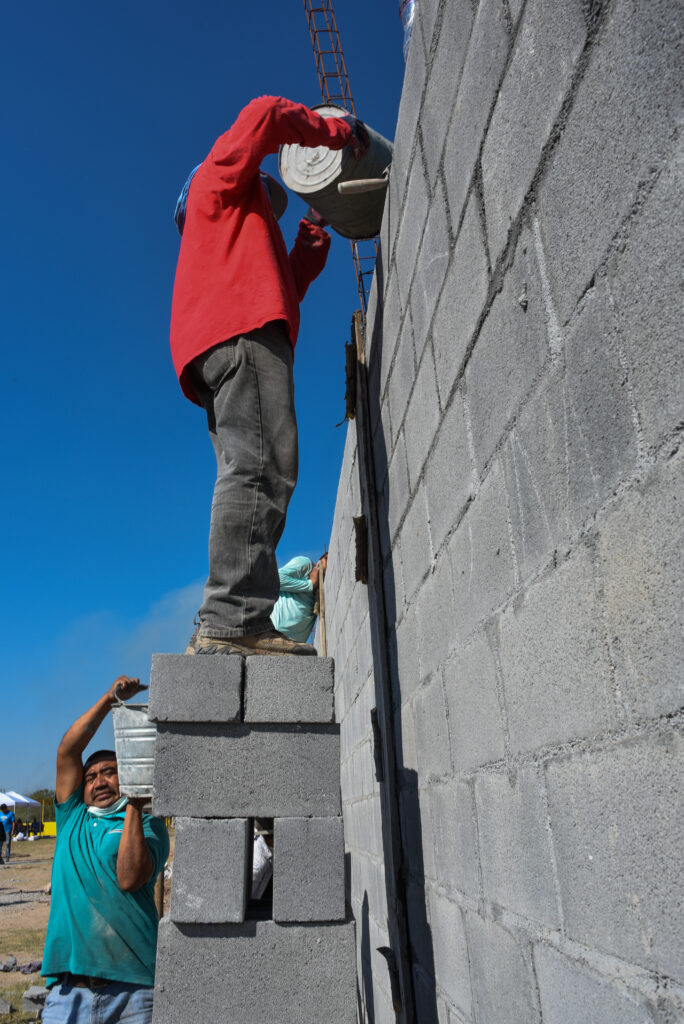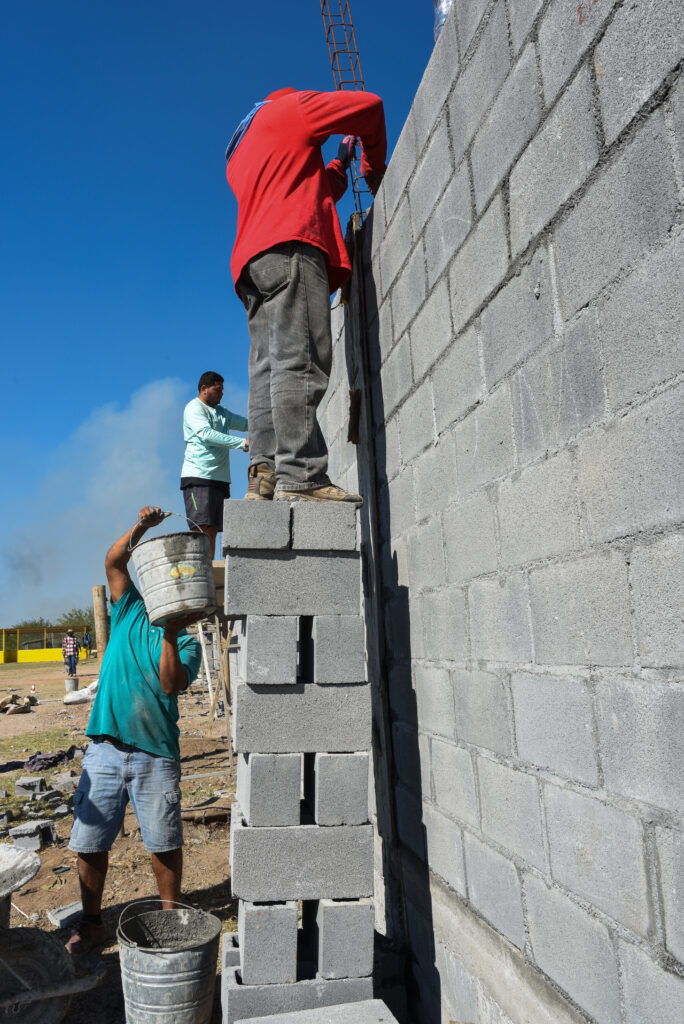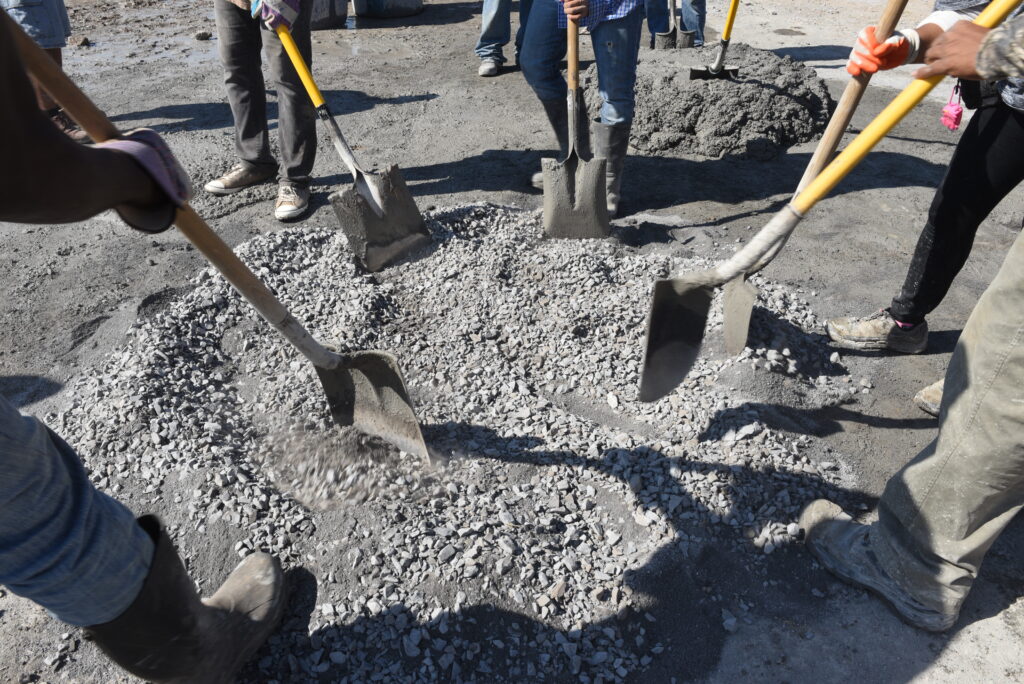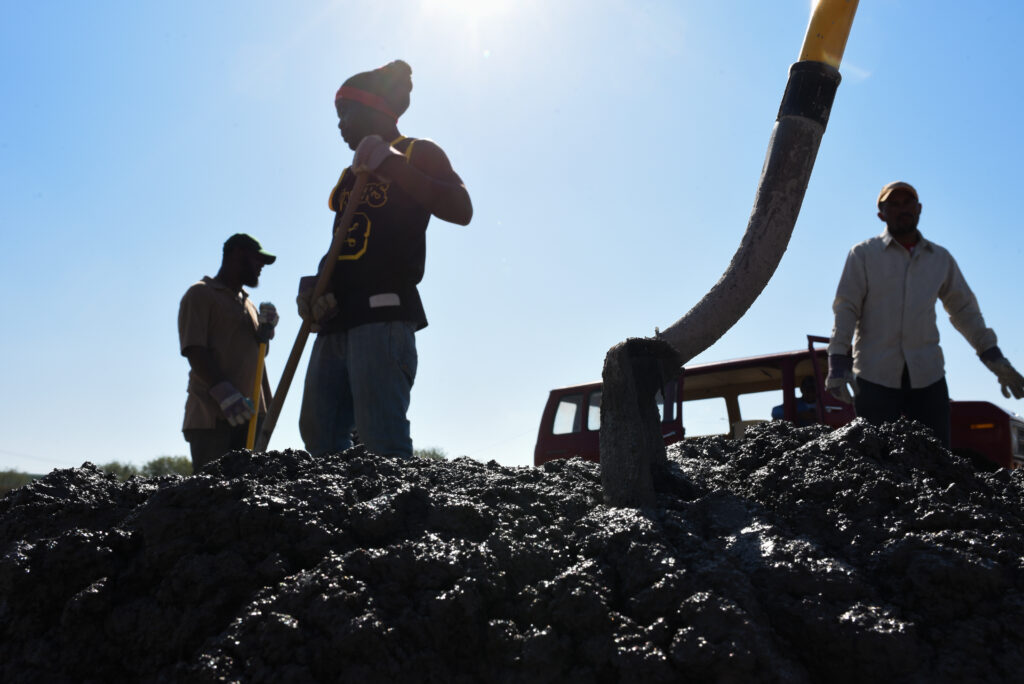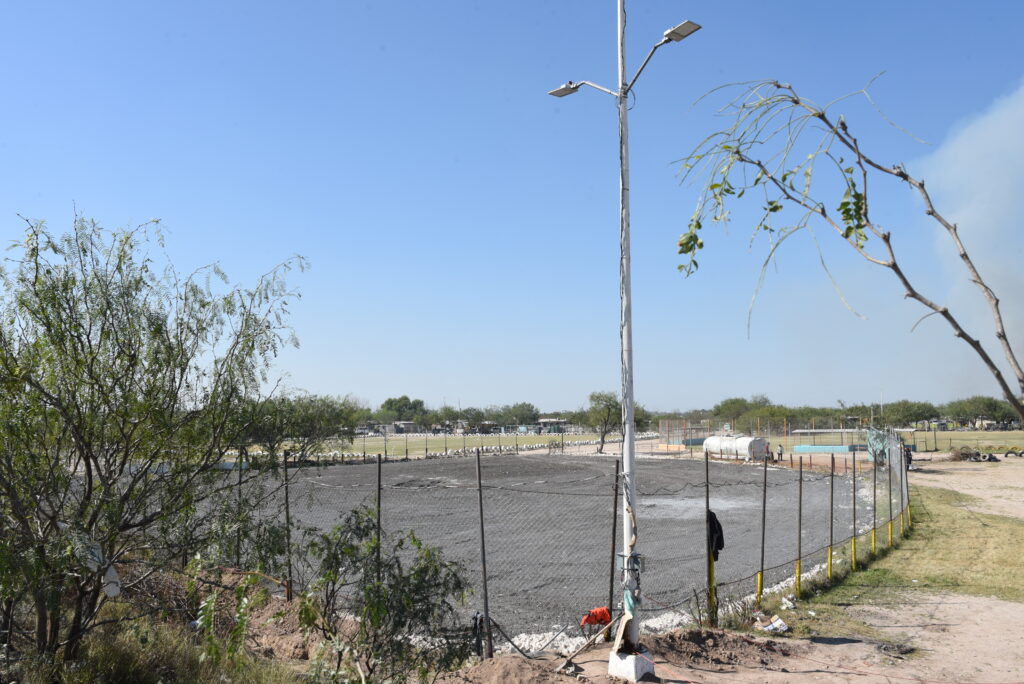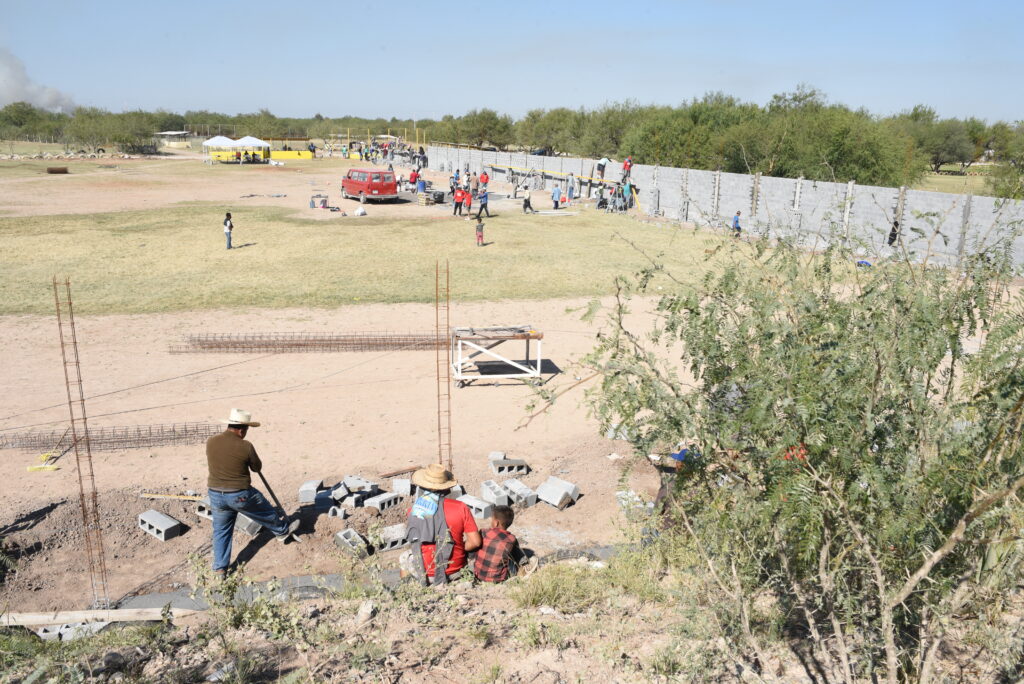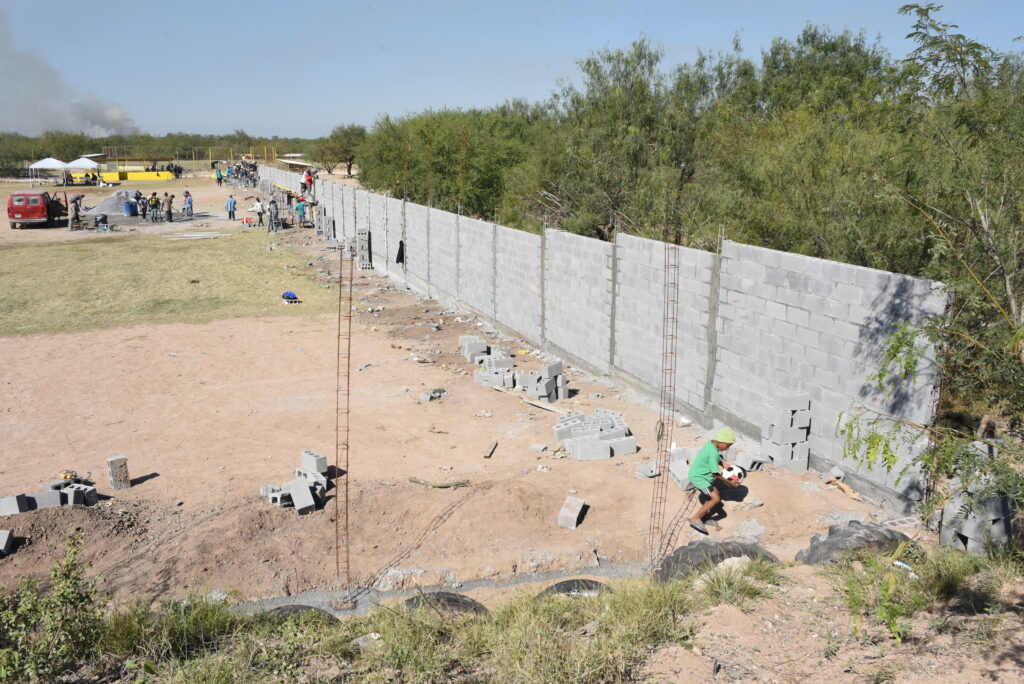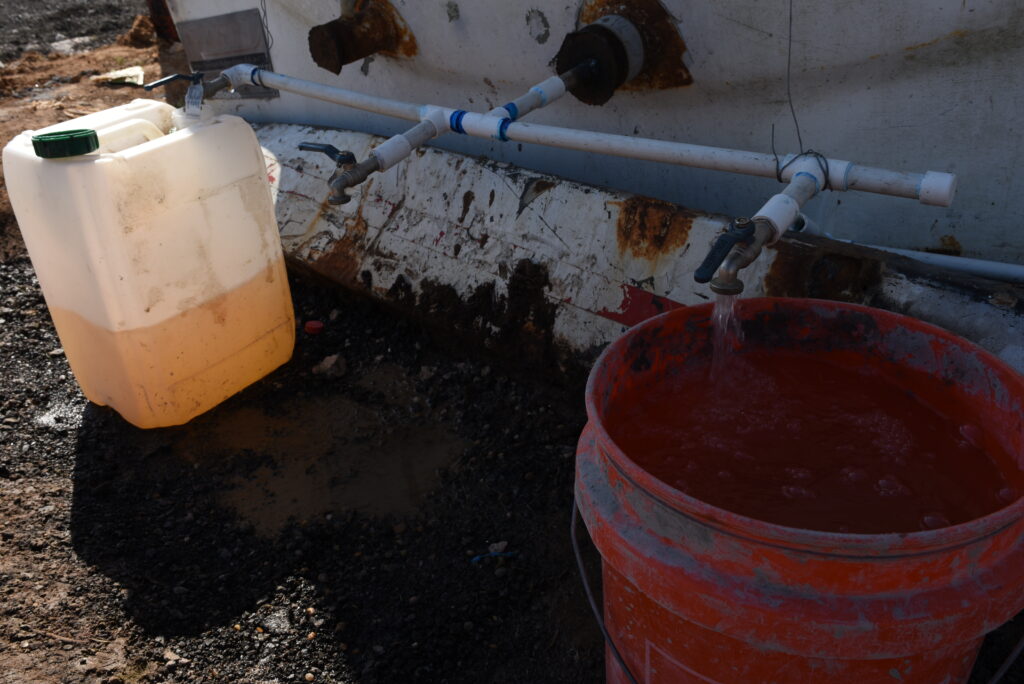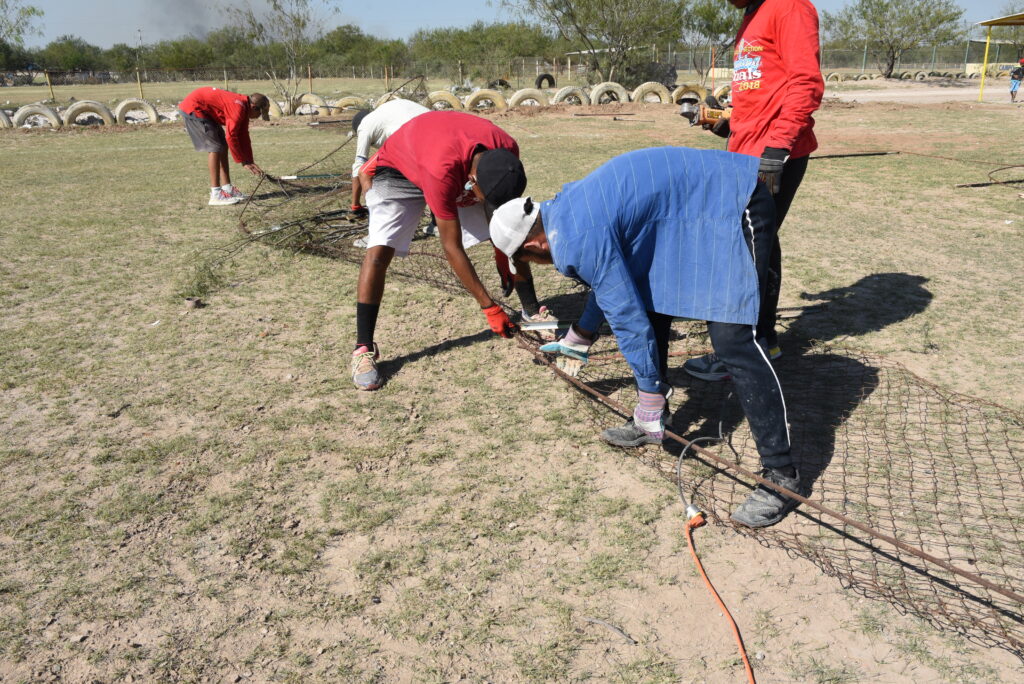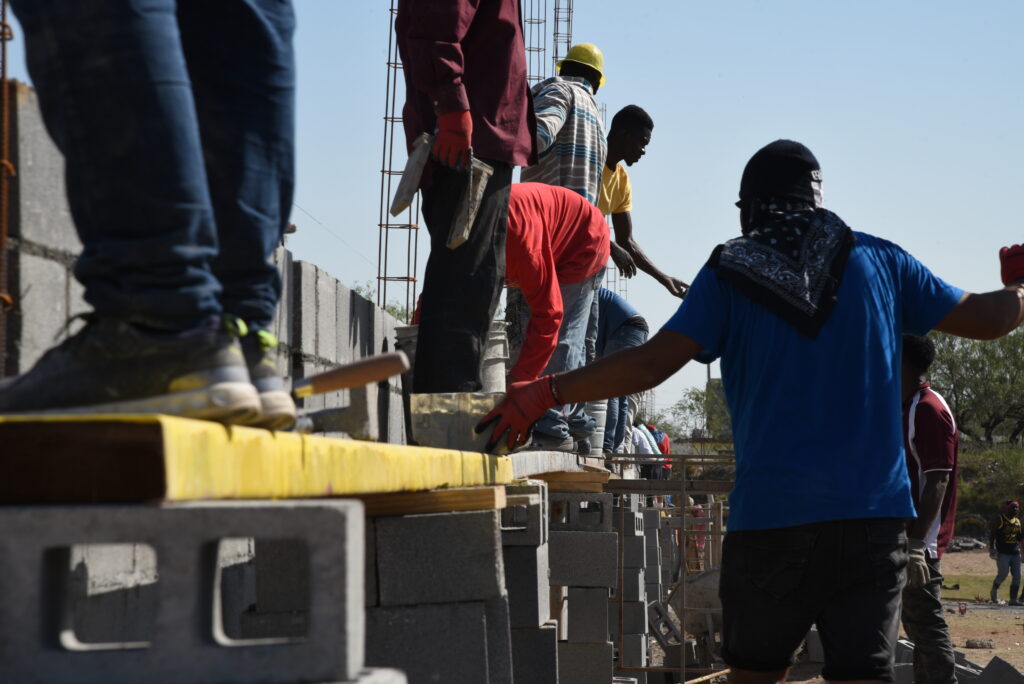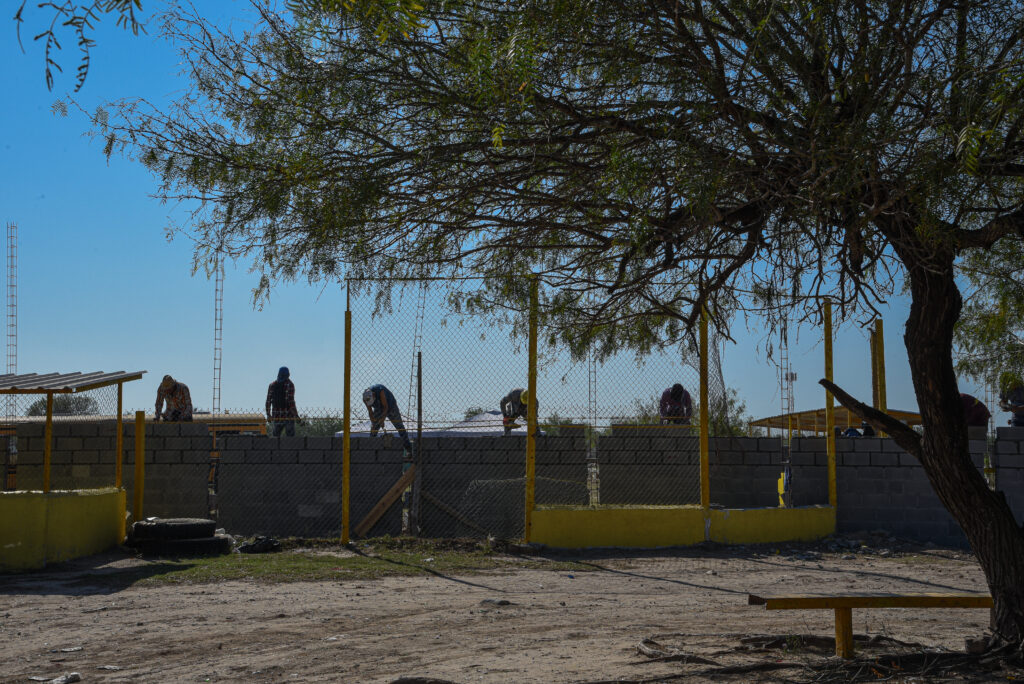Men standing on cinder blocks stacked like a Jenga tower grabbed pails of concrete handed by others below them at a Reynosa baseball field Thursday afternoon, where construction began for a new migrant encampment days ago.
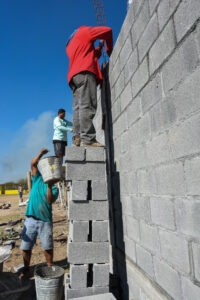
(Valerie Gonzalez | [email protected])
A long winding road filled with potholes and without public lighting lead the way from a plaza, a mile and a half away, which has served as dan encampment for hundreds of migrants sent back to Mexico by the United States.
The city has sought to remove migrants from the plaza since August when critical infrastructure was stripped from the encampment. Conditions continued to deteriorate to the point that volunteers helping migrants have felt the living situation has become unsustainable.
“The plaza has become a lot more dangerous,” Felicia Rangel-Samponaro, co-founder of the Sidewalk School, said Thursday. “People get kidnapped off of that encampment daily. Families get kidnapped.”
Felicia Rangel-Samponaro is one of several volunteers, including Mexican churches, who have visited with migrants at the encampment since March, when migrants began to sleep at the plaza en masse.
Negotiations between city leaders and nongovernmental organizations like the Sidewalk School, Senda de Vida, the city’s largest migrant shelter, and Catholic Charities of the Rio Grande Valley led to the agreement to move the encampment to the baseball field.
Thousands of dollars were donated by the Sidewalk School, an initial investment in the construction that prioritized the construction of a nearly 8-foot wall surrounding the perimeter of the field. People living at Senda de Vida volunteered to work on the project and have worked at a brisk pace in 12-hour shifts.
Migrants will inhabit the baseball field area while medical, educational and other services will be set up closer on the southside where asphalt has been laid out.
On Thursday, men, women and children from Honduras, Guatemala, El Salvador, Haiti, and many other nationalities used hammers, axes, machetes, shovels and buckets to help build the new place for their fellow countrymen.
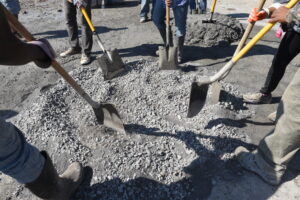
(Valerie Gonzalez | [email protected])
A group used shovels to mix concrete that was then poured in wheelbarrows and parked by men perched on makeshift ladders by the wall.
The concrete from the wheelbarrows was scooped into buckets, lugged over shoulders and above heads to hands reaching down from near the top of the wall.
Children, whose single parents were working on the field, played with soccer balls scattered around the grass. Others sat patiently by their parents under the unseasonably warm winter afternoon.
Many working on the project know what it feels like to live exposed to the elements having lived for several months in the encampment before space opened up at Senda de Vida. Pastor Hector Silva, the director of the shelter, will also be overseeing the new encampment that’s only a few blocks away from Senda de Vida.
The city proposed the site, due to its proximity to the shelter. Rangel-Samponaro said while her organization made an initial contribution to cover expenses for the first portion of the wall, the city will also be donating money to continue the construction. A call was made to the mayor of Reynosa, but he was not immediately available for comment.
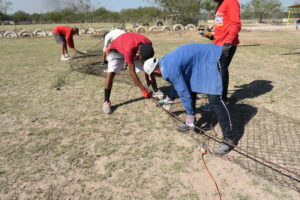
(Valerie Gonzalez | [email protected])
Silva also said the city will be adding lights at the baseball field and along the road leading up to it to enhance safety for migrant transportation.
Once the walls are complete, other buildings will be erected with the financial support of Catholic Charities of the Rio Grande Valley, according to their executive director, Sister Norma Pimentel.
Although there is no set timeline for its completion, construction is competing against incoming changes, including the beginning of the Migrant Protection Protocols that will start in Matamoros. The program will send asylum seekers back to Mexico to wait for their U.S. immigration court hearings. Though, many of the migrants arriving at the border may not qualify to be placed in the program due to their nationality.
Rangel-Samponaro believes the start of MPP could affect the number of migrants staying in Reynosa.
The changes are prompting nongovernmental organizations to prepare shelters in both cities.
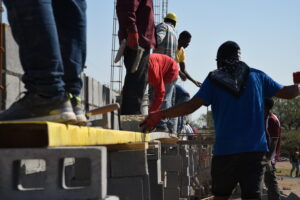
(Valerie Gonzalez | [email protected])
Rangel-Samponaro said an encampment like the one that was built in Matamoros will not be recreated, she said. Instead, Pimentel secured a property that will be developed to shelter 300 to 500 families.
Meanwhile, the baseball field is expected to accommodate up to 1,000 migrants, about 1,000 fewer than those living at the plaza near the bridge currently. NGOs suspect the baseball field may be ready by the start of MPP that can trigger an exodus to Matamoros.
Like the men atop the precarious blocks, planning continues to tentatively move forward.


